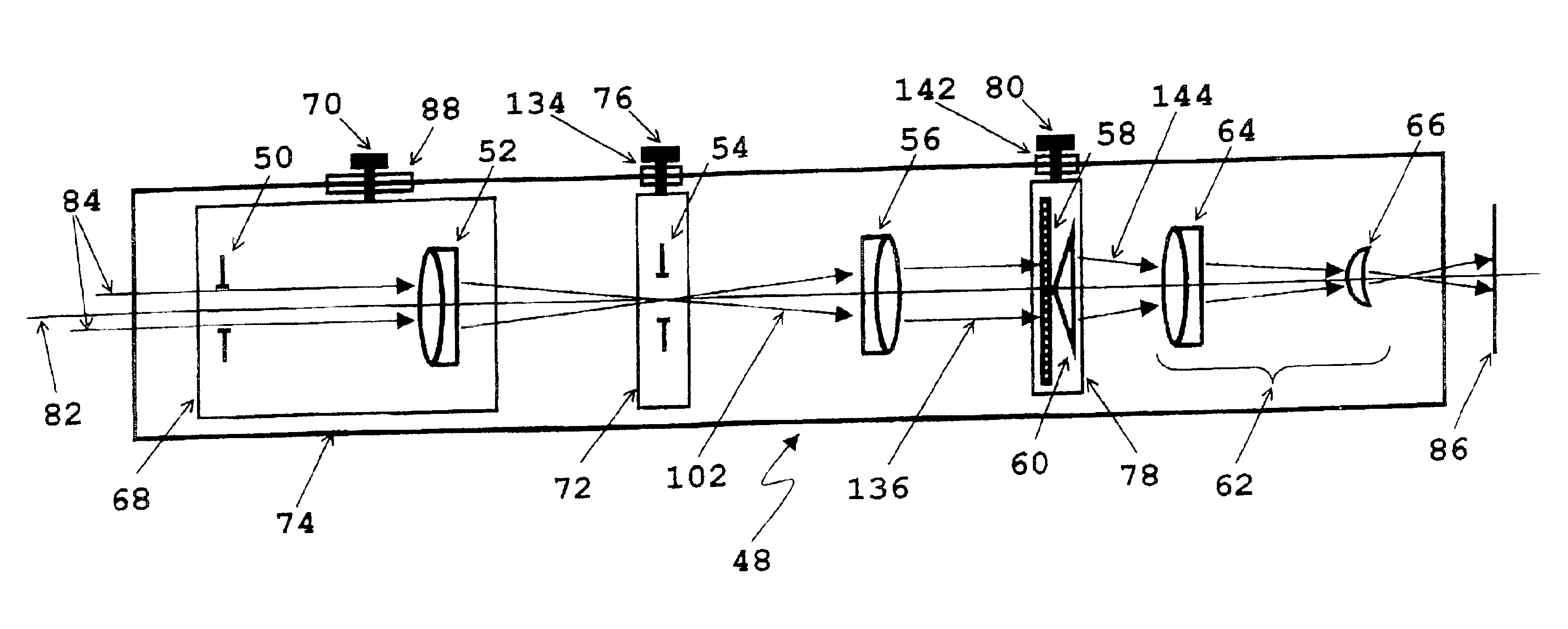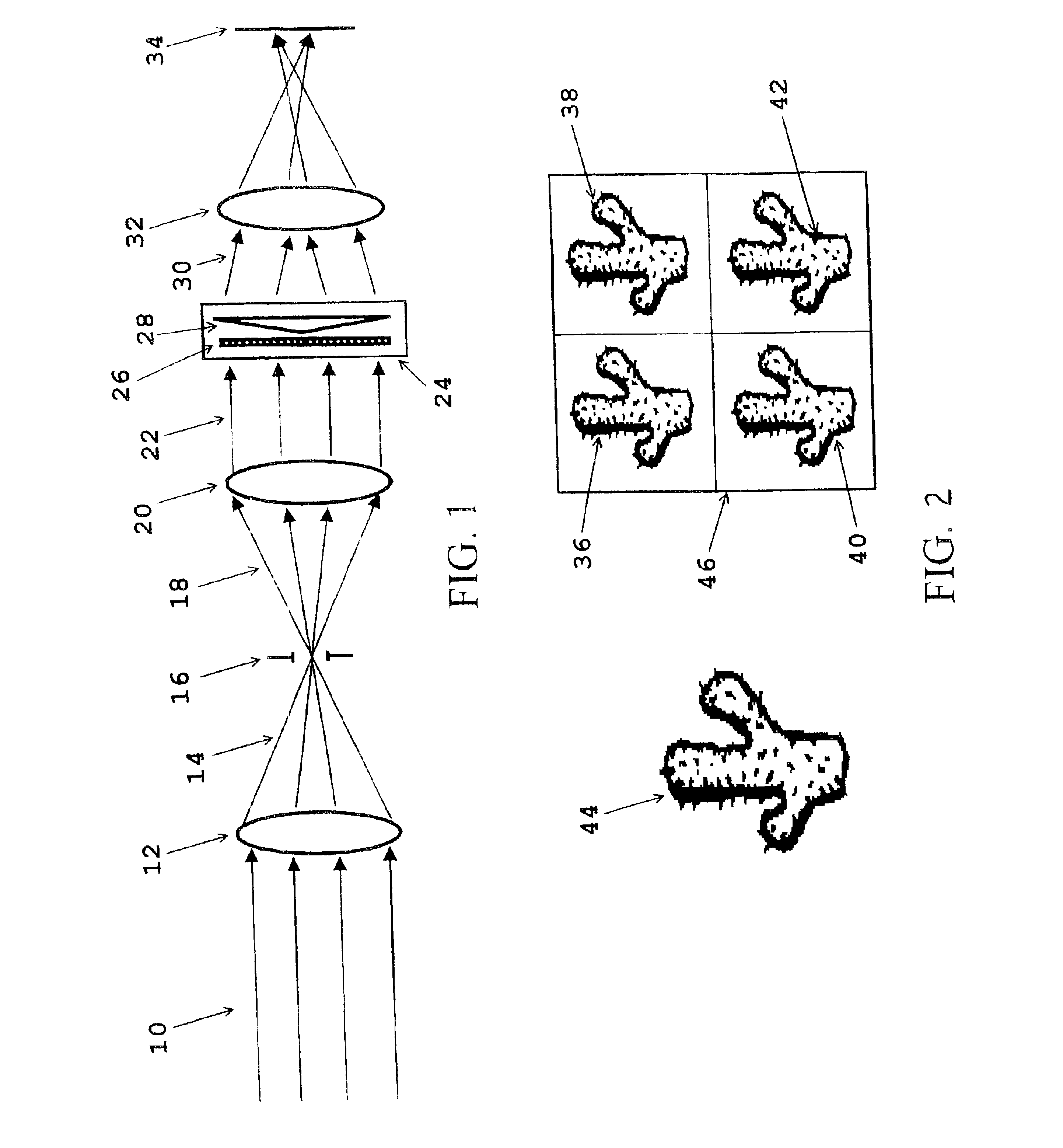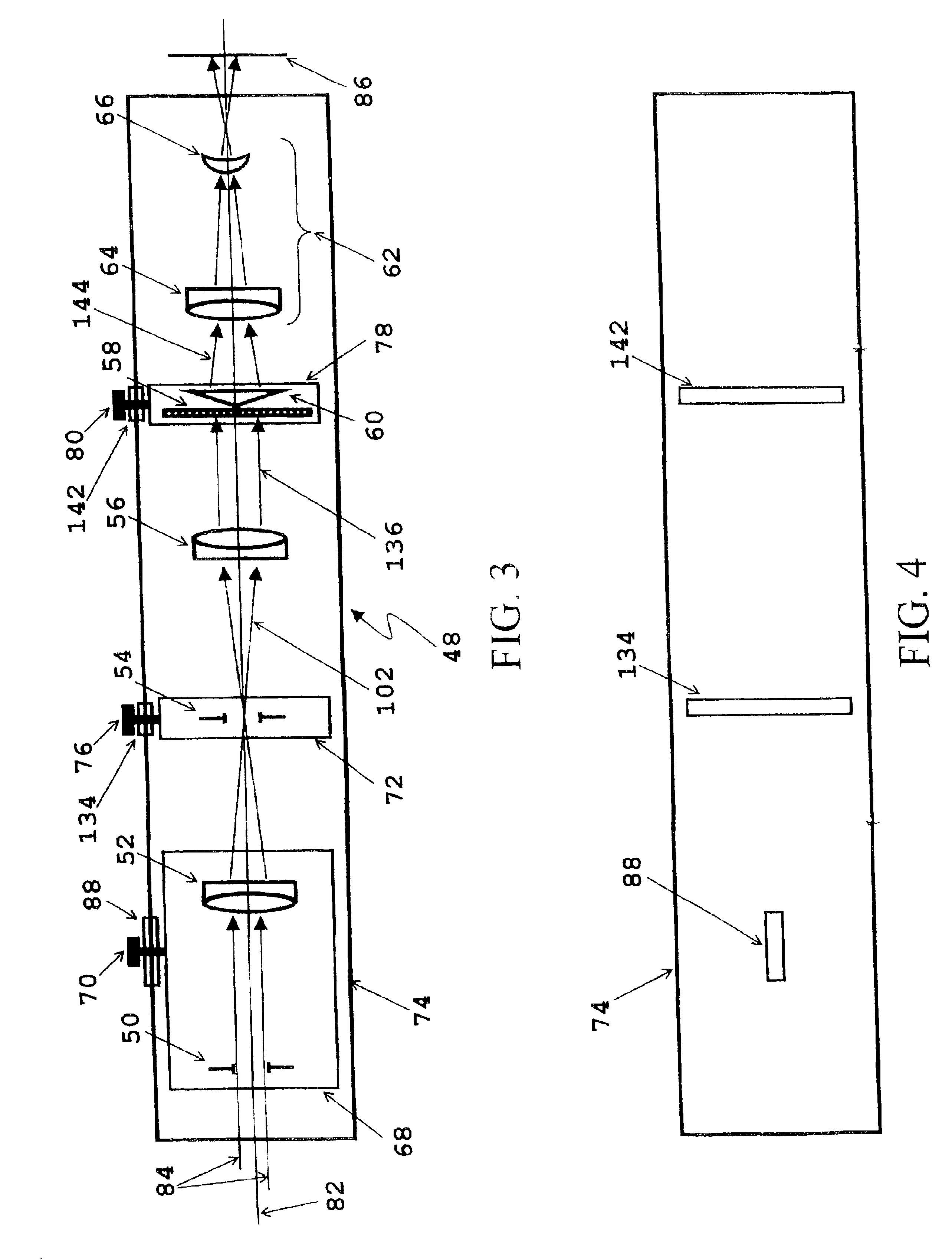Multiple imaging system
a multi-spectral imaging and filter wheel technology, applied in the field of multi-spectral imaging systems, can solve the problems of difficult comparison of images made on the two imaging sensors, three imaging sensors, and insufficient filter wheel-dependent multi-spectral systems,
- Summary
- Abstract
- Description
- Claims
- Application Information
AI Technical Summary
Problems solved by technology
Method used
Image
Examples
Embodiment Construction
The basic concept of the present invention involves telecentrically forming a first image of a distant object, masking the edges of the first image, collimating light from the first image, filtering and then beam-separating the collimated light, and then forming a plurality of separate images on a single imaging plane. FIG. 1 shows a schematic diagram of the present invention.
Referring to FIG. 1, optical radiation 10 from a distant object (not shown) is incident on a first telecentric imaging lens 12 (also referred to as the first telecentric optical sub-system). The first telecentric imaging lens 12 focuses the optical radiation 14 and forms a first image at a plane substantially coincident with a rectangular aperture 16. After focusing to an image at a plane substantially coincident with a rectangular aperture 16, optical radiation next diverges 18 and is incident on a second telecentric imaging lens 20 (also referred to as the second telecentric optical sub-system). The second te...
PUM
 Login to View More
Login to View More Abstract
Description
Claims
Application Information
 Login to View More
Login to View More - R&D
- Intellectual Property
- Life Sciences
- Materials
- Tech Scout
- Unparalleled Data Quality
- Higher Quality Content
- 60% Fewer Hallucinations
Browse by: Latest US Patents, China's latest patents, Technical Efficacy Thesaurus, Application Domain, Technology Topic, Popular Technical Reports.
© 2025 PatSnap. All rights reserved.Legal|Privacy policy|Modern Slavery Act Transparency Statement|Sitemap|About US| Contact US: help@patsnap.com



